Who Cares? COVID-19 Divides in Southeast Asia (Thailand), Bangkok Tribune
While Thailand’s containment measures and strict border controls limited the toll on human life in 2020, its economy was among the worst affected in Southeast Asia. In 2021, the surge in COVID-19 cases associated with the Delta variant, a delayed vaccination program, and political unrest combined to thwart economic recovery
This macroeconomic devastation reflected the impacts felt by many people on their lives and livelihoods. The steep increase in unemployment—especially in the badly affected tourism and hospitality sectors—led to reduced household incomes, pushing many closer to, beneath, or further below the poverty line. Senior journalist Pravit Rojanaphruk summarized the situation by stating, “Unemployment, underemployment, debt, destitution, stress, depression, and suicide are the invisible realities beneath the COVID-19 iceberg of figures reported daily.”
Early on in the crisis, the Thai government boldly intervened to overcome the inadequacies of the established social protection system that provides social security to formal workers and minimal welfare assistance to vulnerable and low-income groups, but no protection whatsoever to informal sector workers not classified as welfare beneficiaries—precisely those disproportionately affected by the COVID-19 crisis.
As the pandemic continued into its second year, however, aid became increasingly inflexible and inadequately distributed, with cash transfers giving way to subsidy and co-payment schemes aimed at stimulating consumer spending, supporting businesses and boosting the economy. At a time when the Delta variant was reaching its peak, these measures did not benefit those most in need who did not have sufficient resources to partake in them.
Critics also drew attention to how differing political opinions and the impossibility of assembly—especially of the reinvigorated opposition movement—during the “zero local transmission period” were stifled in the name of security. The application of curfews and bubble-and-seal methods to enclose migrants and low-wage construction workers within their living areas, irrespective of their infection status, raised concerns about securitization, the disrespect of human rights, and double standards.
This photo essay is part of the photo exhibition “Who Cares? COVID-19 Divides in Southeast Asia”, organized by SEA-Junction and the Institute for Population and Social Research (IPSR) of Mahidol University, in partnership with the Ministry of Higher Education, Science, Research and Innovation, the National Research Council of Thailand (NRCT), Silkworm, Khon Thai 4.0 and Bangkok Tribune. (The exhibition is on display from 17 to 29 October 2023 | Curved Wall, 3rd Floor, BACC). For more details, check out at http://seajunction.org/event/photo-exhibition-who-cares-covid-19-divides-in-southeast-asia and https://bkktribune.com/photo-exhibition-who-cares-covid-19-divides-in-southeast-asia/
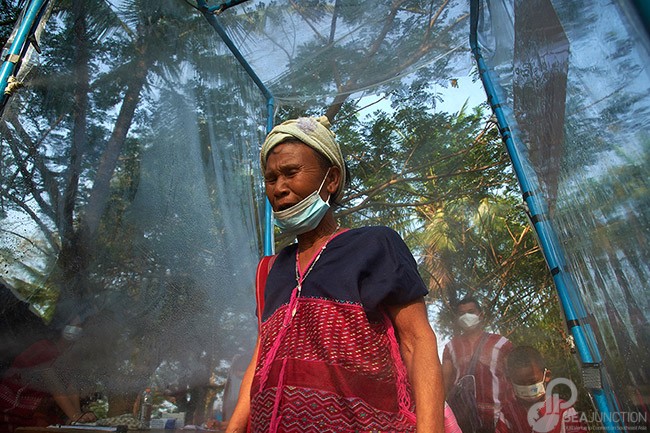
People from a remote Karen ethnic community pass through a disinfectant portal. These methods of unproven efficacy were enforced in a top-down manner throughout the pandemic, Phop Phra District, Tak Province, March 17, 2022. Photo: Sayan Chuenudomsavad

Deserted entertainment destinations in Patpong due to the pandemic and its impact on tourism. Entertainment and sex workers lost their incomes. Yet, given the irregularity of their jobs and/or their migrant status, they were mostly ineligible for official assistance and received little or no government support. Photo: Sayan Chuenudomsavad
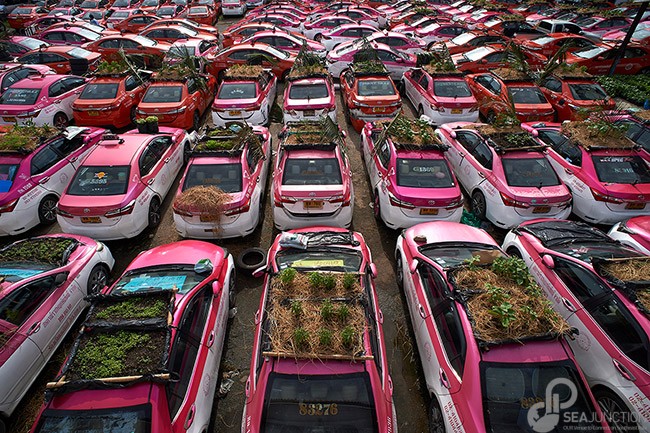
Leased taxis returned by drivers due to insufficient earnings are transformed into veggie gardens by taxi cooperative staff not only to meet their own needs, but also as a sign of protest against the State which they deemed had failed to provide them with sufficient support, September 19, 2021. Photo: Sayan Chuenudomsavad
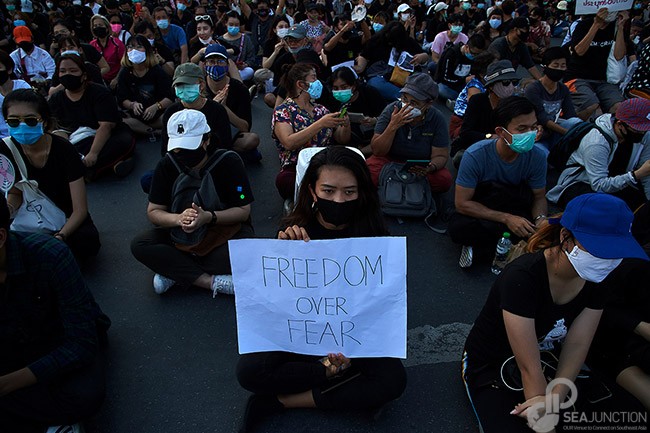
Liberation Youth group gathered at democracy monument to protest against the misuse of the State of Emergency enacted by the Prime Minister Prayut Chan-o-cha, which was seen as unjustified in a period of supposedly zero local transmission Photo: Sayan Chuenudomsavad
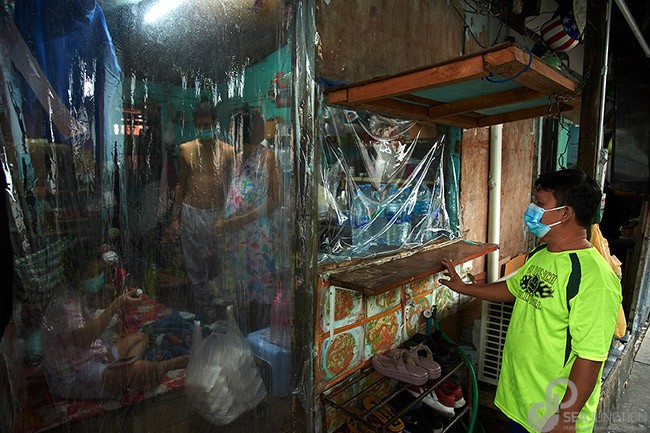
Plastic barriers are installed in a family store in one of Bangkok’s low-income areas. Inside, there are infected family members, as well as quarantined baby. Photo: Sayan Chuenudomsavad

An old warehouse in Chiang Mai is used to isolate COVID-19 infected migrant workers from Myanmar during a recovery period of two weeks prior to their being compelled to leave their jobs and sent away, November 14, 2021. Photo: Sayan Chuenudomsavad
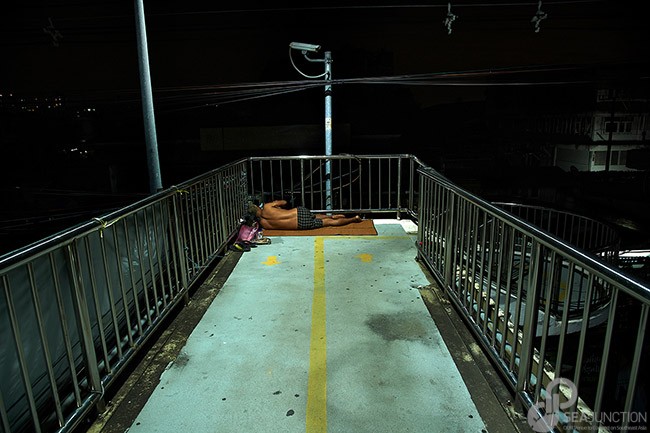
A homeless man sleeps on an overpass in Bangkok. The crisis forced many low-income people onto the street after they lost their precarious jobs, with significant numbers still trying to recover as COVID-19 began to wane, May 4, 2022. Photo: Sayan Chuenudomsavad
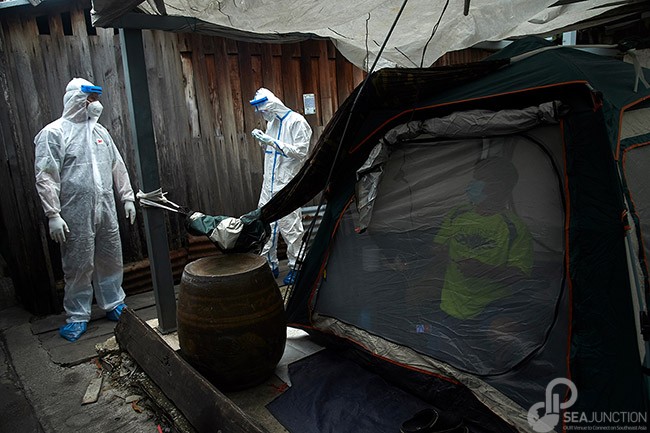
Uninfected family members stay in a tent while those infected (a majority) self-isolate at home in a sealed off low-income area in Bangkok, July 26, 2021. Photo: Sayan Chuenudomsavad
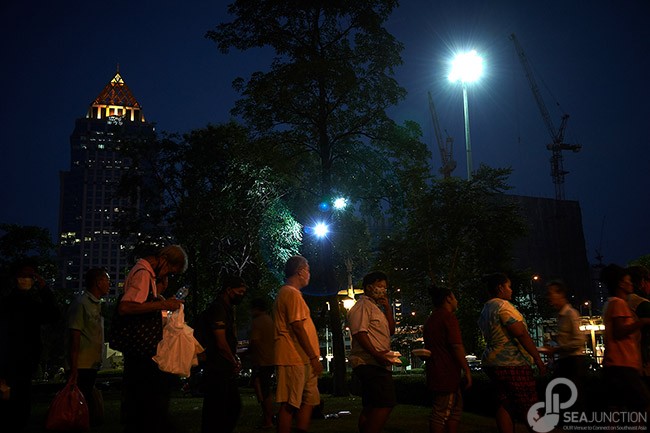
Homeless people could be seen waiting for food donations from private individuals and non-governmental organizations at Lumphini Park every day during the pandemic, while government assistance for them was scarce if not non-existent, April 15, 2020. Photo: Sayan Chuenudomsavad
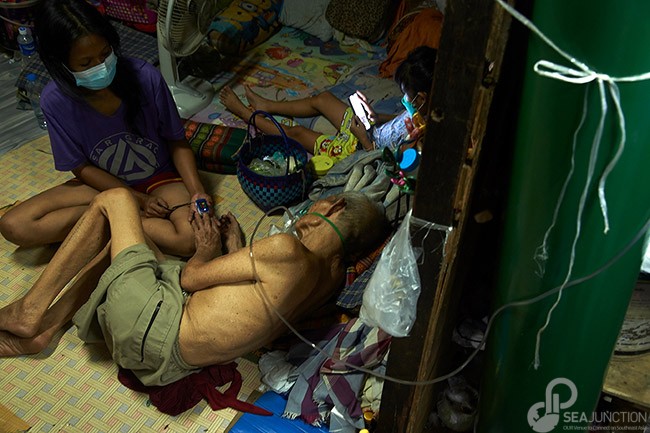
An elderly resident in a low-income settlement in Sathon District uses an oxygen cylinder to breathe while his grandchild passes the time away on the phone in the same tiny room where keeping a safe distance is impossible, Bangkok, July 24, 2021. Photo: Sayan Chuenudomsavad
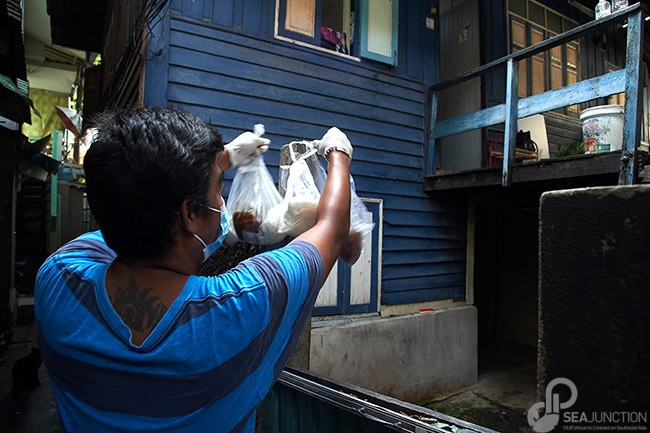
Volunteers visit neighbours with COVID-19 to deliver food and medicine during their home isolation in Ban Khrua Nuea, Bangkok, August 16, 2021. Photo: Sayan Chuenudomsavad
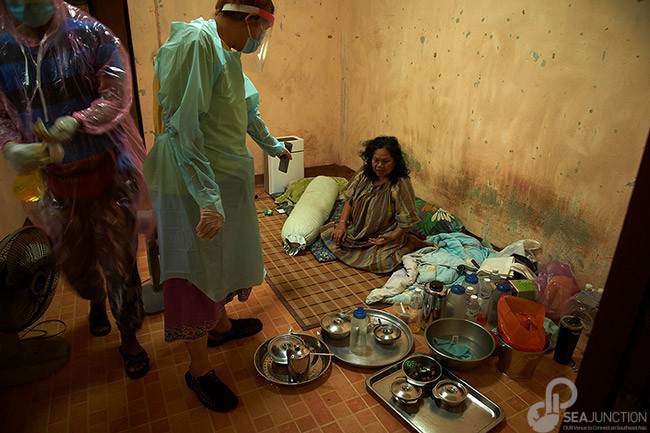
Ban Khrua Nuea residents help one another distributing food to COVID-19 patients and the jobless, August 16, 2021. Photo: Sayan Chuenudomsavad
Source : https://bkktribune.com/who-cares-covid-19-divides-in-southeast-asia-thailand/
